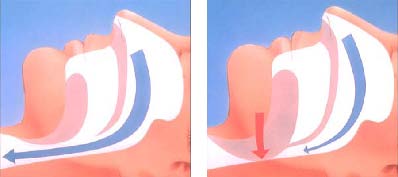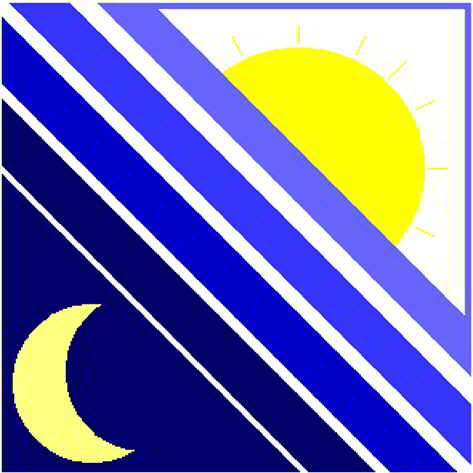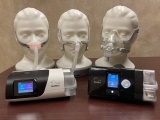The Not-So-Silent Killer
 Normal vs. Obstructed Airway
|
Sleep apnea is the second-most common of all sleep disorders, affecting an estimated 12 million Americans, most of whom have not been diagnosed. Obstructive sleep apnea (OSA) is a condition where the airway repeatedly collapses or narrows during sleep, causing oxygen levels to drop and sleep patterns to be disrupted. Snoring and daytime sleepiness are the most common symptoms associated with sleep apnea. Other symptoms can include high blood pressure, anxiety and depression, weight gain, memory problems, impotency, and headaches. Sleep apnea is a serious condition that not only affects the quality of life, but can have surprisingly severe health consequences.
Snoring is often the chief complaint of OSA sufferers. Snoring is caused by the vibration of soft tissue that occurs when the breath is drawn through a narrowed or collapsing portion of the airway. The noise of snoring can be both embarrassing to the snorer and can disrupt the sleep of spouses, family, and even neighbors! But snoring may be only a symptom of the real problem.
As the snorer works to draw each breath, the collapse of the airway can limit the airflow and cause blood-oxygen levels to drop. This drop in oxygen levels triggers adrenaline production, which results in an arousal from sleep so that airway muscles can be flexed to re-open the airway. This arousal is usually brief and although it diminishes the restfulness of the night, rarely goes into conscious memory. A proper laboratory-based sleep study, called a nocturnal polysomnography, will reveal the exact number of arousals caused by the apneas.
Patients with OSA typically experience a combination of apneas and hypopneas. Strictly speaking, an apnea is defined as a complete stoppage of airflow lasting 10 or more seconds. A hypopnea is a significant reduction of airflow (30% or more) that causes a 4% or greater drop in the oxygen levels. Most patients with OSA experience more hypopneas than apneas. Hypopneas are more difficult to detect without a proper sleep study, but can be just as harmful as apneas.
If left untreated, OSA can significantly increase risks of high blood pressure, heart disease, and stroke. Fortunately, help is available to fully negate both the health effects and quality-of-life effects of sleep apnea. Contact us today to find out what can be done to help you or a loved one who may be suffering with OSA.
Call Us
For more information, to schedule a sleep study, or to check your insurance benefits, give us a call.Have Us Call You
Yes, we surf the internet late at night too. Fill in this form, and we can call you back during the day.







